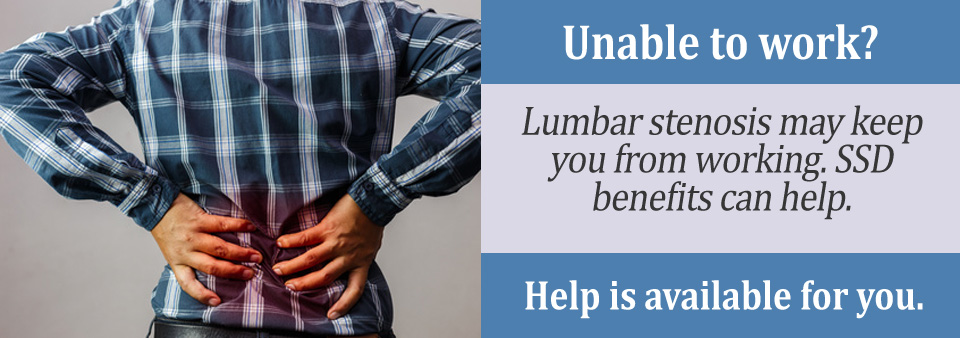If you experience a constant pain in the neck and/or lower back, you understand the agony caused by the symptoms of lumbar stenosis. The potentially debilitating neck and back ailment narrows the spine to place incredible pressure on the nerves traveling inside of the spine from the neck to the lower back region.
Some patients experience mild symptoms that a mild exercise regimen can mitigate. However, in many cases, lumbar stenosis symptoms become painful enough for a patient to miss an extended period of work.
One in four workers that have reached 20 years of age will experience a disabling injury at some point during their working careers. Despite onsite safety changes that have reduced workplace accidents, there are still plenty of ways workers can experience lumbar stenosis symptoms.
This includes wrenching the lower back by making an awkward move while lifting a heavy object. Fortunately, the Social Security Act of 1935 gives workers the right to file for disability.
The key is to work with an accomplished Social Security attorney who can help you submit a convincing disability application.
Evidence of Medical Treatment
The Social Security Administration (SSA) requires disability applicants to have missed at least 12 consecutive months of work because of lumbar stenosis. If you demonstrate that you missed 12 consecutive months of work, then you qualify to submit a disability application. Your application must include medical documents that confirm a lumbar stenosis diagnosis, as well as copies of medical bills that verify treatment and rehabilitation expenses.
The disability application must contain the names, addresses, and phone numbers of every physician and every clinic that took part in some phase of your diagnostic, treatment, and recovery process. Physician notes are especially effective at persuading the SSA to approve a disability application for lumbar stenosis.
Make sure to include the cost of prescription medicines, as well as a statement from your current doctor that estimates how much more time you will be out of work because of lumbar stenosis.

Information in Addition to Medical Documents
Although medical documents form the cornerstone of a successful disability application, you also have to inform the SSA about how much lumbar stenosis has cost you in wages. You have to prove what you would have earned full time, which means submitting W2 forms not only from the current year, but also from the most recent years when you worked full time.
Your employer should send a notarized letter explaining to the SSA how much you earn per year, and including your most recent tax forms with a disability application is also recommended to strengthen your case. Consulting with a state licensed Social Security attorney ensures you submit every document required by the SSA. Any missing documents will make your argument for disability pay much weaker.
Contact an Experienced Social Security Attorney
The SSA is a huge agency that is backed by the legal power of dozens of polished lawyers. You cannot expect to have your disability application approved, unless you present the type of persuasive evidence an accomplished lawyer knows how to gather. Your attorney might also contact the SSA directly by phone and/certified mail to argue for your best interests.
Reach out to a Social Security attorney today by scheduling a free initial consultation. Your lawyer will conduct a careful examination of the facts to determine how to submit the most convincing Social Security disability application.